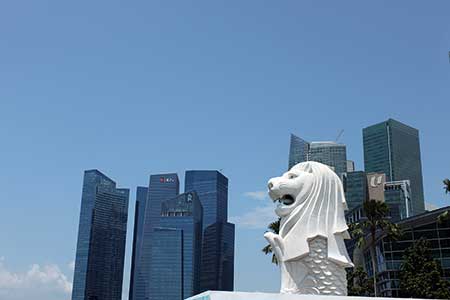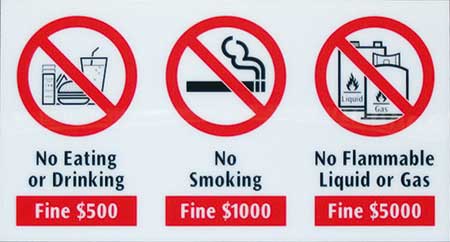Majulah Singapura
From Fishing Village to Asia’s Biopolis (Pt I)
Career strategies for young European scientists
by Ralf Schreck, Labtimes 03/2013
Page 1 | Page 2 | Page 3
Biomedicine was proclaimed the key pillar of Singapore’s economic growth in the late 1990s. Several years and billions of Singapore Dollars later, it has become a world-class research hub and an attractive destination for foreign scientists.
Thousands of scientists from abroad, including Nobel Laureates but also scientific talent have been attracted to Singapore’s Biopolis by cutting-edge research infrastructure, high salaries and generous research funds in the recent past. In the beginning, the job description for scientists was quite simple: do excellent science and publish in high impact journals. Nowadays, researchers in Singapore have to cope with additional challenges. Requests for research funds are no longer decided exclusively on scientific value but on societal or economic impact. Projects receiving financial support are expected to gain some, preferably short-term, return. Funds for pure, basic research with the sole objective of generating new knowledge have been cut and competitive funding for cooperative projects with industrial partners have been significantly reinforced. In the first part of this two-part article on Singapore, Lab Times will provide some insight into how Singapore has planned and mastered scientific success in focus areas, whereas the second part will cover major research performers and future developments.
Singapore at a glance
The Republic of Singapore is a 700 km2-spanning city-state between Malaysia and Indonesia with one major island and 60 smaller ones. Singapura is the Malay word for Lion City. The name goes back to a legend saying that once a future sovereign of Singapore got lost in the jungle and encountered a lion, which he frightened away just by eye contact. As an outpost of the Sumatran Empire, the later Singapore was called Temasek for Sea Town more than 1,800 years ago. During World War II it was referred to as the Gibraltar of the East due to its strategic location and efficient port infrastructure. Ambitious large-scale projects such as Gardens by the Bay and the 300 km Park Connector Network transformed the reputation of Singapore from the Garden City into a City in a Garden. But it is also called the Fine City, since all kinds of littering as well as jaywalking, eating on public transport or feeding birds are punished by a hefty couple of hundred bucks fine, in addition to several hours of public service. Singapore is further referred to as One North, due to its location at one degree north of the equator, or as the Little Red Dot, since its small size means you may not find it on many global maps.
With 5.3 million inhabitants, out of whom 38% are foreigners, Singapore is one of the most densely populated nations. Land reclamation is a top priority. In order to save space, more than 80% of its citizens are living in high-rise and subsidised public housing apartments of the Housing and Development Board, an organisation under the Ministry of National Development. Chinese, constituting three quarters of Singapore’s residents, as well as Malay, Indian and Eurasian minorities contribute to the unique mixture of races and cultures in Singapore. The main working language is English, which in everyday life may become Singlish, the special Singaporean way of speaking English. Mandarin, Malay and Tamil are additional official languages. Cars are driven on the left but owning and driving a car is highly regulated and quite expensive, so that the overcrowded public transport is the preferred choice to get around. The Singapore Dollar is the currency and presently equals € 0.60.
Strict laws
The history of modern Singapore started in 1819, when a treaty for establishing a British port in Singapore was ratified. Around that time, there were only 1,000 people, primarily Malaysians and a few Chinese, living in Singapore. Over the next 50 years the population grew to 100,000, largely due to Chinese and Indian immigrants working in tin mines and on rubber plantations. During World War II, the British Crown Colony Singapore was temporarily occupied by Japan. Singapore gained independence from Britain in 1963 and from Malaysia in 1965. It became a parliamentary republic with a President and a Prime Minister, currently Lee Hsien Loong, as Head of Government.
There is a mandatory death penalty for murder or severe drug offences and gatherings of five or more people in public have to be approved by the police. Several family planning programmes by the Government such as “Stop at Two” or “Three or More (if you can afford it)” have attempted to regulate the population size in the past. Nowadays, Singapore has one of the lowest birth rates of developed countries and is dependent on immigration to meet labour market needs. The programme “Baby Bonus” was installed this year and provides € 3,800 for each of the first two and € 5,000 for each of the next two newborns as well as priority treatment, when it comes to buying government-built apartments.
Page 1 | Page 2 | Page 3
Last Changed: 09.05.2013








